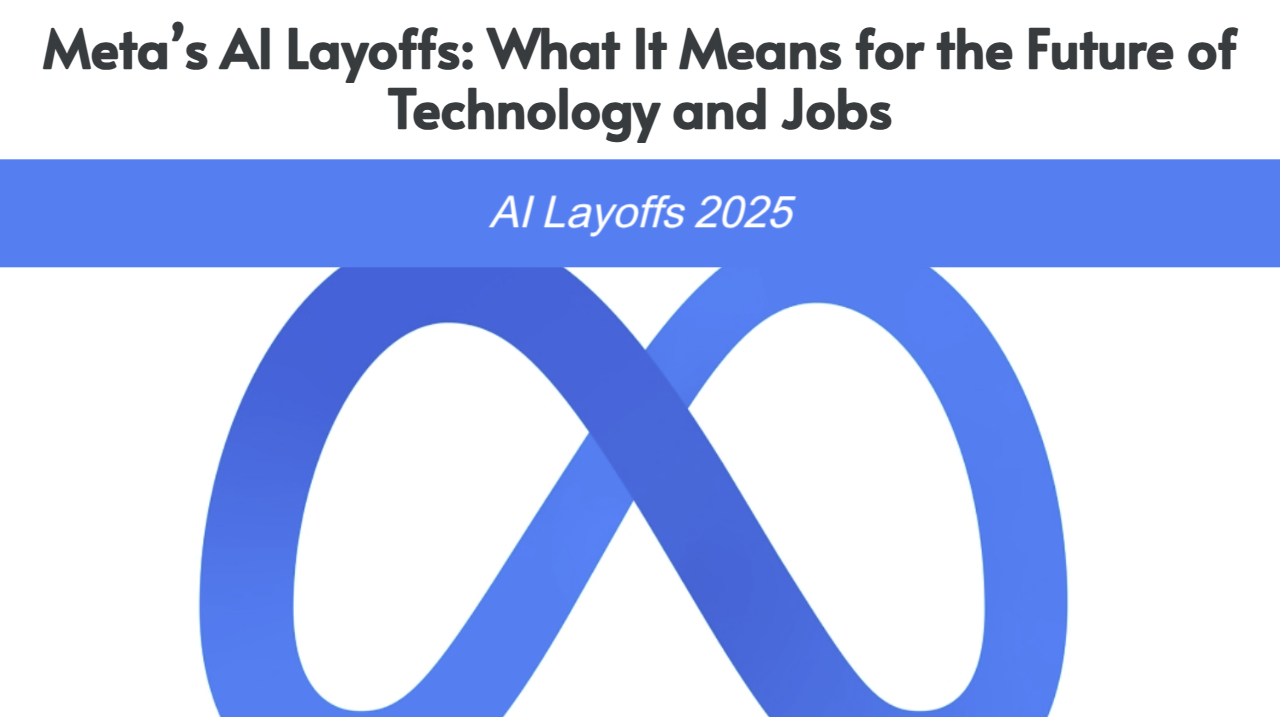The Great AWS Outage 2025: What Really Happened
bigsansar | Nov. 4, 2025

In October 2025, the world witnessed one of the most significant digital disruptions in recent memory. A large-scale outage in Amazon Web Services (AWS) brought down websites, apps, and online systems across the globe, reminding everyone how dependent modern life has become on a single cloud infrastructure. What began as a small technical problem in one AWS region quickly turned into a global issue that affected millions.
On October 20, 2025, AWS’s US-EAST-1 region, located in Northern Virginia, suffered from a severe network failure. Several AWS services started experiencing higher error rates and latency issues, making them unreliable or completely inaccessible. Later investigations revealed that a faulty DNS record in Amazon’s internal DynamoDB database triggered a chain reaction, disrupting communication between multiple services. What seemed like a minor bug ended up halting a large portion of the internet.
The scale of the outage was massive. Popular platforms such as Snapchat, Roblox, and Fortnite were among the first to go offline. Even Amazon’s own e-commerce services, including shopping and internal management systems, were partially affected. Social media users around the world expressed frustration as apps refused to load, and business owners struggled to manage online orders and data transfers. For a few hours, the internet felt unusually silent, as if the digital world had suddenly paused.
This event exposed how interconnected and fragile the internet ecosystem truly is. Businesses of all sizes rely heavily on cloud infrastructure for data storage, hosting, and payment processing. When AWS failed, it wasn’t just a technical issue—it became a financial and operational crisis for countless organizations. Online banks, airline booking systems, streaming platforms, and media networks all experienced downtime. The outage made one thing clear: a disruption in a single data center can ripple through the global economy within minutes.
From this experience, many valuable lessons emerged. Companies realized the danger of relying entirely on one cloud provider or a single server region. The importance of having a multi-region or multi-cloud backup system became more evident than ever. It also reminded organizations that disaster recovery plans should not only exist on paper—they must be tested regularly. Transparency proved essential, too. During the outage, AWS provided status updates, but many users demanded faster and clearer communication. In the digital age, information and trust are just as critical as technology itself.
Beyond the technical aspects, the AWS outage revealed something deeper about human dependency on technology. For years, cloud computing has worked so seamlessly that most people never thought about the invisible infrastructure keeping their favorite apps alive. When the cloud went down, people realized how much of their work, education, communication, and daily routines depended on systems they could neither see nor control. The event forced a collective reflection: should so much of the world’s digital life depend on a single company’s network?
The AWS outage of October 2025 will likely be remembered as one of the most important internet disruptions of the decade. It was more than a failure—it was a wake-up call. It showed how far we have come in building global connectivity and how much more we need to focus on resilience and preparedness. The internet eventually recovered, but the lessons from that day continue to echo through the world of technology. In the age of the cloud, a momentary failure anywhere can cause disruption everywhere. In October 2025, the world witnessed one of the most significant digital disruptions in recent memory. A large-scale outage in Amazon Web Services (AWS) brought down websites, apps, and online systems across the globe, reminding everyone how dependent modern life has become on a single cloud infrastructure. What began as a small technical problem in one AWS region quickly turned into a global issue that affected millions.
On October 20, 2025, AWS’s US-EAST-1 region, located in Northern Virginia, suffered from a severe network failure. Several AWS services started experiencing higher error rates and latency issues, making them unreliable or completely inaccessible. Later investigations revealed that a faulty DNS record in Amazon’s internal DynamoDB database triggered a chain reaction, disrupting communication between multiple services. What seemed like a minor bug ended up halting a large portion of the internet.
The scale of the outage was massive. Popular platforms such as Snapchat, Roblox, and Fortnite were among the first to go offline. Even Amazon’s own e-commerce services, including shopping and internal management systems, were partially affected. Social media users around the world expressed frustration as apps refused to load, and business owners struggled to manage online orders and data transfers. For a few hours, the internet felt unusually silent, as if the digital world had suddenly paused.
This event exposed how interconnected and fragile the internet ecosystem truly is. Businesses of all sizes rely heavily on cloud infrastructure for data storage, hosting, and payment processing. When AWS failed, it wasn’t just a technical issue—it became a financial and operational crisis for countless organizations. Online banks, airline booking systems, streaming platforms, and media networks all experienced downtime. The outage made one thing clear: a disruption in a single data center can ripple through the global economy within minutes.
From this experience, many valuable lessons emerged. Companies realized the danger of relying entirely on one cloud provider or a single server region. The importance of having a multi-region or multi-cloud backup system became more evident than ever. It also reminded organizations that disaster recovery plans should not only exist on paper—they must be tested regularly. Transparency proved essential too. During the outage, AWS provided status updates, but many users demanded faster and clearer communication. In the digital age, information and trust are just as critical as technology itself.
Beyond the technical aspects, the AWS outage revealed something deeper about human dependency on technology. For years, cloud computing has worked so seamlessly that most people never thought about the invisible infrastructure keeping their favorite apps alive. When the cloud went down, people realized how much of their work, education, communication, and daily routines depended on systems they could neither see nor control. The event forced a collective reflection: should so much of the world’s digital life depend on a single company’s network?
The AWS outage of October 2025 will likely be remembered as one of the most important internet disruptions of the decade. It was more than a failure—it was a wake-up call. It showed how far we have come in building global connectivity and how much more we need to focus on resilience and preparedness. The internet eventually recovered, but the lessons from that day continue to echo through the world of technology. In the age of the cloud, a momentary failure anywhere can cause disruption everywhere.
0 COMMENTS:

The Great AWS Outage 2025: What Really Happened
In October 2025, a major AWS outage disrupted global internet services. Learn what caused it, how i…

OpenAI Signs $38 Billion AWS Deal | AI Infrastructure Revolution
OpenAI partners with AWS in a $38B deal to power next-gen agentic AI with massive cloud infrastruct…

NVIDIA and the AI Revolution: How One Company is Shaping the Future of Technology
Discover how NVIDIA became the driving force behind the global AI revolution. Learn about its growt…

Meta AI Layoffs 2025: Why Meta Is Restructuring Its AI Division
Meta has laid off 600 employees from its AI division to focus on efficiency and automation. Learn w…

Snapchat in Nepal: Why It’s Becoming the New Digital Trend Among Nepali Youth (2025)
Discover why Snapchat is gaining popularity in Nepal. Explore how Nepali youth are embracing the ap…

Jensen Huang and India’s AI Future: How NVIDIA is Powering the Next Tech Revolution
Discover how NVIDIA CEO Jensen Huang’s vision is transforming India’s AI landscape — from 20x compu…

Strava Sues Garmin: Patent Lawsuit Over Segments and Heatmaps Explained
Strava has filed a lawsuit against Garmin in the United States, accusing the GPS giant of patent in…

Claude Code in South Korea: AI Coding Revolution with Anthropic’s Claude
Discover why Claude Code is trending in South Korea. Learn how Anthropic’s Claude is transforming c…

BSNL’s Digital Revival: Indigenous 4G, Upcoming 5G, and India’s Telecom Future
Discover how BSNL is making a strong comeback in India with its indigenous 4G rollout, upcoming 5G …

Airtel Offers Free Perplexity Pro for 1 Year in India
Airtel partners with Perplexity AI to give 360M users in India 12 months of free Perplexity Pro acc…